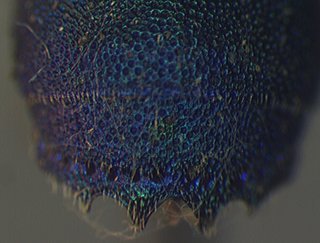
Native Bee Inventory and Monitoring Lab; Photographer: Theo · 9
Chrysis propria |
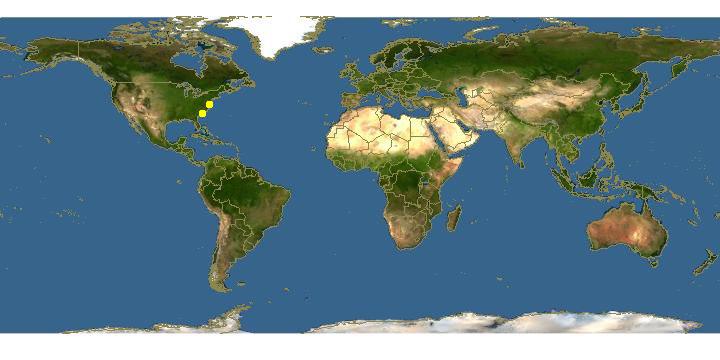
Click on map for details about points.
|
80x5 -
240x3 -
240x4 -
320x1 -
320x2 -
320x3 -
640x1 -
640x2
Set display option above.
Click on
images to enlarge. |
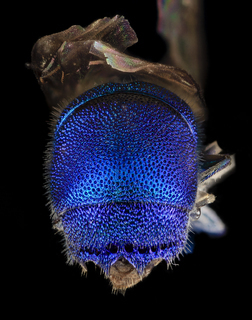
© Copyright source/photographer
· 5
Chrysis propria, Aaron, U, Back, MD, Baltimore County-Recovered |
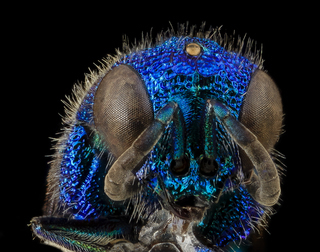
© Copyright source/photographer
· 5
Chrysis propria, Aaron, U, Face, MD, Baltimore County |
|
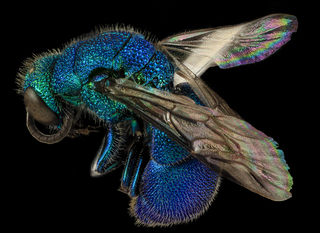
© Copyright source/photographer
· 5
Chrysis propria, Aaron, U, Side, MD, Baltimore County |
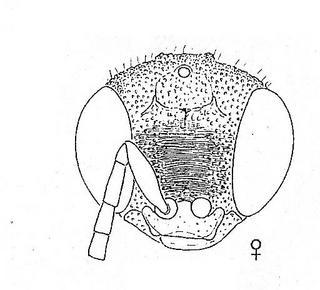
R. M. Bohart L. S. Kimsey, 1982 · 1
Chrysis propria, head |
|
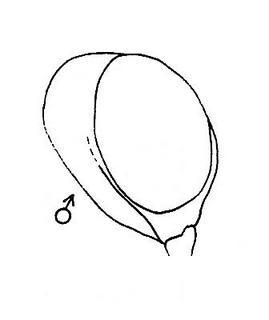
L. S. Kimsey R. M. Bohart, 1990 · 1
Chrysis propria, head, side |
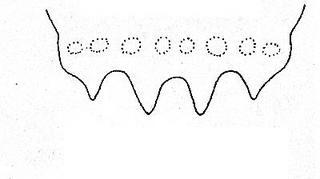
R. M. Bohart L. S. Kimsey, 1982 · 1
Chrysis propria, tail |
|
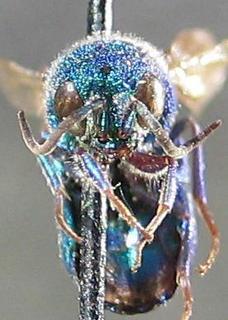
Native Bee Inventory and Monitoring Lab; Photographer: Erika Tucker · 1
Chrysis propria, face |
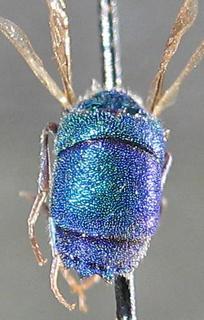
Native Bee Inventory and Monitoring Lab; Photographer: Erika Tucker · 1
Chrysis propria, tail |
|
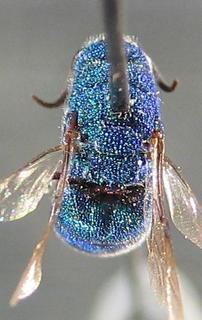
Native Bee Inventory and Monitoring Lab; Photographer: Erika Tucker · 1
Chrysis propria, top |
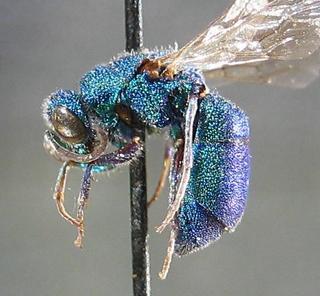
Native Bee Inventory and Monitoring Lab; Photographer: Erika Tucker · 1
Chrysis propria |
|
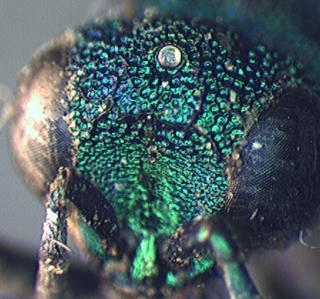
Native Bee Inventory and Monitoring Lab; Photographer: Erika Tucker · 1
Chrysis propria, face |
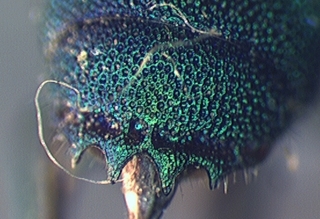
Native Bee Inventory and Monitoring Lab; Photographer: Erika Tucker · 1
Chrysis propria, tail |
|
Overview |
Taken from:
R. M. Bohart and L. S. Kimsey. 1982. A Synopsis of the Chrysididae in America North of Mexico.
Chrysis propria Aaron
(Figs. 175, 176, 203)
Chrysis propria Aaron 1885:238. Lectotype male, Montana (ANSP).
Chrysis kahli Viereck 1906:194. Holotype male, Kansas (KU).
Chrysis pattonella Viereck 1906:194. Holotype male, Hamilton Co., Kansas (KU).
Chrysis submontana Rohwer 1909:91. Syntype females, Rifle, Colorado (USNM). New synonym.
Chrysis rinconensis Mocsary 1914:54. biotype male, Rincon, Guerrero, Mexico (BMNH). New synonym.
Discussion: Restudy of submontana and rinconensis types indicates that they are propria. There is considerable variation in T-III lateral expansion which is generally evenly convex in contrast to the rather angular form in (compare figs. 168, 175). Seemingly a more critical difference is the shape of the middle notch of T-III. In propria it is simply and sharply margined at its deepest point (fig. 176). In this area is more complex, slightly depressed and with a second as well as more ventral edge visible in view from directly above (fig. 169). Both species have the subantennal distance longer than the malar space but less than 2.0 MOD (fig. 203). Male genitalia are similar (see fig. 278), but quite different from other species in the group. The digitus is unusually slender (as in fig. 279).
Host: A note on a female specimen collected by E. T. Vest at Provo, Utah reads Taken after laying egg in Odynerus hole, July 26, 1934. Frank Parker has written that he reared several propria from Ancistrocerus sp. and Leptochilus rufinodus (Cresson) in twig nests.
Material examined: 95 males including types of propria, kahli, pattonella and rinconensis 241 females including syntypes of submontana.
Distribution: Most states from Indiana and Louisiana west; also Ontario to British Columbia, and Mexico states of Chihuahua, Coahuila, Guerrero and Durango.
Species group of Chrysis propria Aaron
Diagnosis: Male and female F-I about 1.8-2.1 times as long broad, longer than F-III; subantennal distance 1.3-2.5 MOD and longer than malar space which is 0.5-1.3 MOD (in propria these two lengths about equal); transverse frontal carina irregular, often partial, with backward branches toward ocelli; midocellus surmounted by a thin eyelidlike fold; genal carina almost touching eye opposite base of forecoxa; mesopleuron and metanotum rather simple; T-II median longitudinal ridge absent or faint; T-III simple or double edged distally, four toothed, lateral edge undulate to strongly convex in semilateral view.
Included species: crotema Bohart prolata Bohart propria Aaron, tensa Bohart, and vibex bohart.
Discussion: The greatly reduced genal area occurs to a lesser extent in the group lauta which shows some other similarities. Based on records of one species, hosts are eumenids. When more biological information is available, the relationship of the group may be easier to assess. The group was described originally by Bohart (1964:228) who included rivalis and aridula, both removed from it at the present and submontana, which is now considered a synonym of propria.
Key to Chrysis propria group
1. Upper genal area just behind compound eye with a polished spot, subantennal distance
about 2.0 MOD
.vibex Bohart
Upper genal area completely punctate, subantennal distance various .
... 2
2. Subantennal distance less than 2.0 MOD, shorter than F-II (fig. 203)
...3
Subantennal distance more than 2.0 MOD, longer than F-II
..4
3. T-III laterally undulate or rather evenly convex (fig. 175), median notch of T-III simple, sharply edged (fig. 176)
.propria Aaron
T-III laterally expanded and somewhat angular or subdentate (fig. 168), median notch of
T-III modified as in fig. 169
.tensa Bohart
4. T-III median line in side view forming a nearly even curve
..prolata Bohart
T-III median line in side view forming a strong double curve
crotema Bohart
|
|
| Supported by | |
Updated: 2024-04-25 19:33:59 gmt
|